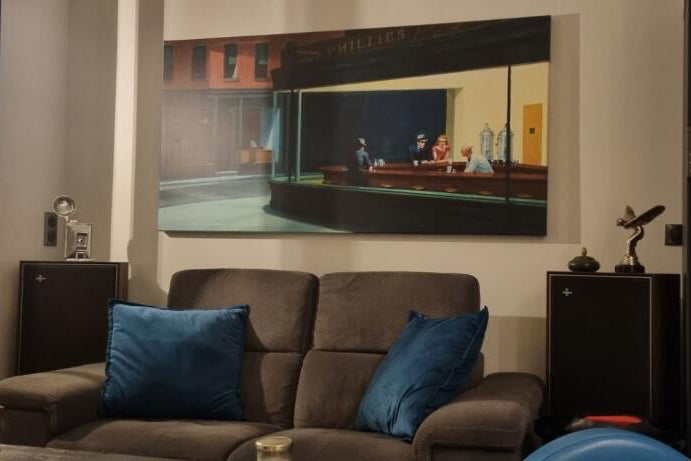Art print | Au Promenoir - Constantin Guys


View from behind

Frame (optional)
Constantin Guys – Introduction captivante
The artwork "Au Promenoir" by Constantin Guys is an invitation to immerse oneself in the vibrant atmosphere of 19th-century Paris. Through this canvas, the artist manages to capture not only the elegance of the silhouettes strolling through gardens and boulevards but also the very essence of urban life at that time. The characters, carefully dressed, seem to tell stories of fleeting encounters and pleasures, while the lush scenery evokes a calming nature in contrast to the bustling city life. This piece, a true ode to beauty and sophistication, offers the viewer a window into a bygone world, while freely sparking the imagination.
Style and uniqueness of the work
Constantin Guys' style is distinguished by its finesse and attention to detail. Each brushstroke appears animated with a lightness, giving the overall an almost ethereal atmosphere. The colors, subtly chosen, range between soft hues and more vivid shades, creating a harmonious balance that draws the eye. The artist excels in depicting movement, bringing his characters to life as they seem to move gracefully within their environment. The composition of "Au Promenoir" is a clever blend of realism and impressionism, where light plays a central role, illuminating faces and clothing while casting delicate shadows. This approach allows viewers to feel not only the beauty of the scene but also the emotion it conveys, making the work deeply immersive.
The artist and his influence
Constantin Guys, often regarded as one of the pioneers of impressionism, managed to leave his mark on his era with his unique vision of society. An artist of modern life, he captured the essence of the customs of his time, becoming a privileged witness to the transformation of Paris. His influence is felt not only through his own works but also among many artists who followed, such as Manet and Degas. Guys established a dialogue between painting and photography, drawing inspiration from the latter for his compositions. His ability to immortalize fleeting moments and transform them into visual stories

Matte finish

View from behind

Frame (optional)
Constantin Guys – Introduction captivante
The artwork "Au Promenoir" by Constantin Guys is an invitation to immerse oneself in the vibrant atmosphere of 19th-century Paris. Through this canvas, the artist manages to capture not only the elegance of the silhouettes strolling through gardens and boulevards but also the very essence of urban life at that time. The characters, carefully dressed, seem to tell stories of fleeting encounters and pleasures, while the lush scenery evokes a calming nature in contrast to the bustling city life. This piece, a true ode to beauty and sophistication, offers the viewer a window into a bygone world, while freely sparking the imagination.
Style and uniqueness of the work
Constantin Guys' style is distinguished by its finesse and attention to detail. Each brushstroke appears animated with a lightness, giving the overall an almost ethereal atmosphere. The colors, subtly chosen, range between soft hues and more vivid shades, creating a harmonious balance that draws the eye. The artist excels in depicting movement, bringing his characters to life as they seem to move gracefully within their environment. The composition of "Au Promenoir" is a clever blend of realism and impressionism, where light plays a central role, illuminating faces and clothing while casting delicate shadows. This approach allows viewers to feel not only the beauty of the scene but also the emotion it conveys, making the work deeply immersive.
The artist and his influence
Constantin Guys, often regarded as one of the pioneers of impressionism, managed to leave his mark on his era with his unique vision of society. An artist of modern life, he captured the essence of the customs of his time, becoming a privileged witness to the transformation of Paris. His influence is felt not only through his own works but also among many artists who followed, such as Manet and Degas. Guys established a dialogue between painting and photography, drawing inspiration from the latter for his compositions. His ability to immortalize fleeting moments and transform them into visual stories










